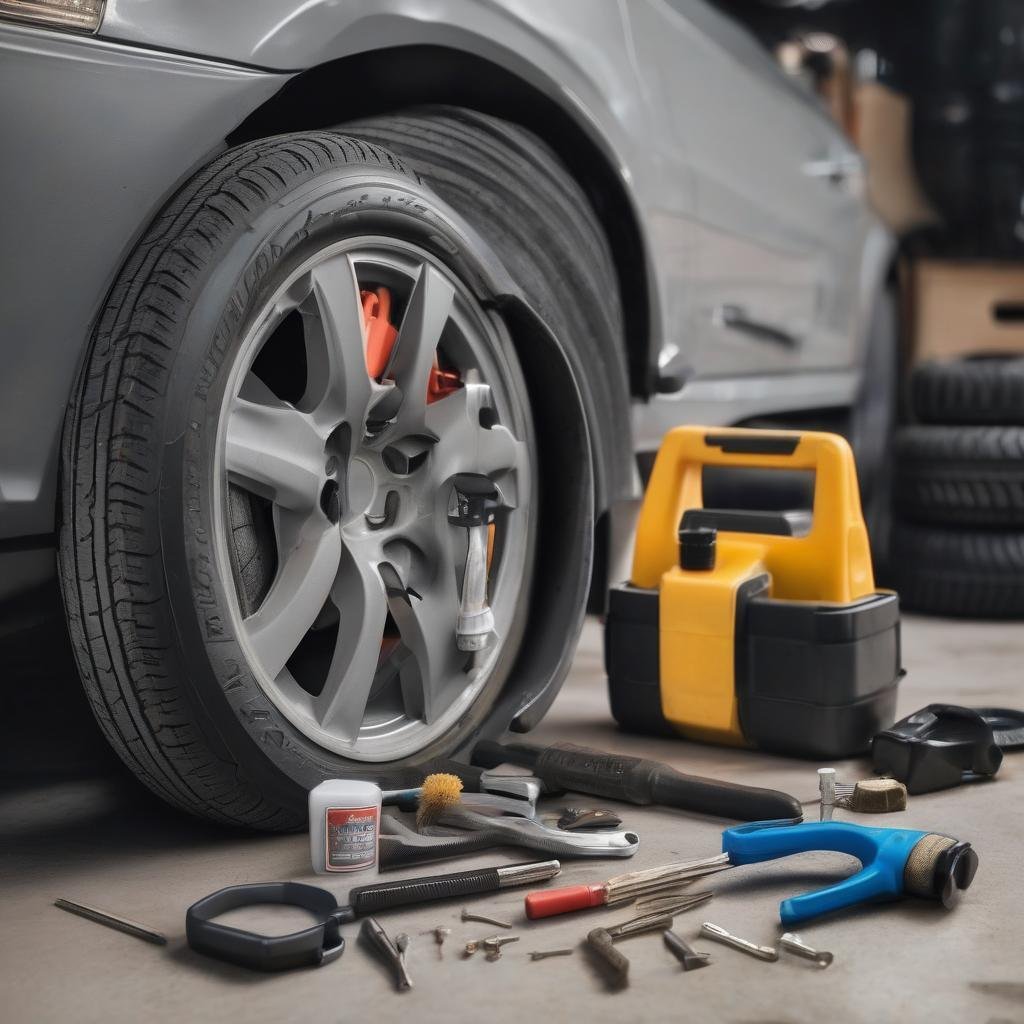
How to Fix a Tire Leak
“`html
How to Fix a Tire Leak: DIY Tips for Slow Leaks, Valve Issues, and Punctures
Introduction
Discovering a tire leak can be frustrating, but many common issues can be fixed at home with the right tools and knowledge. Whether you’re dealing with a slow leak, a faulty valve stem, or a puncture, understanding how to diagnose and repair the problem can save you time and money. In this guide, we’ll walk you through step-by-step solutions for the most common tire leaks, helping you get back on the road safely.
Identifying the Source of the Leak
Before attempting any repairs, it’s crucial to locate the exact source of the leak. Here’s how:
1. The Soapy Water Test
Mix dish soap with water in a spray bottle and apply it generously to the tire surface, valve stem, and wheel rim. Watch for bubbles forming, which indicate escaping air. Pay special attention to:
- The tread area (potential punctures)
- The sidewalls (possible cracks or damage)
- The valve stem (common leak point)
- Where the tire meets the rim (bead leaks)
2. Visual Inspection
Look for obvious signs like nails, screws, or other debris embedded in the tread. Also check for:
- Cracks in the sidewall
- Corrosion around the valve stem
- Damage to the wheel rim
Fixing Different Types of Tire Leaks
1. Repairing Punctures in the Tread
For punctures in the tread area (not sidewalls), you can use a tire plug kit:
- Remove the object causing the puncture
- Ream out the hole with the kit’s tool
- Thread a plug through the insertion tool
- Insert the plug into the hole, leaving about 1/4″ protruding
- Trim excess plug material
- Reinflate the tire and check for leaks
Note: This is a temporary fix. For permanent repairs, visit a professional who can patch the tire from the inside.
2. Fixing Valve Stem Leaks
Valve stem issues are common causes of slow leaks. Solutions include:
- Tightening the valve core: Use a valve core tool to gently tighten the core
- Replacing the valve core: Unscrew the old core and install a new one
- Replacing the entire valve stem: Requires removing the tire from the rim
After any valve repair, always check your tire pressure to ensure proper inflation.
3. Addressing Bead Leaks
If air is escaping where the tire meets the rim:
- Deflate the tire completely
- Clean the rim and tire bead surfaces
- Apply bead sealer if available
- Reinflate to proper pressure
Persistent bead leaks may indicate rim damage requiring professional attention.
When to Replace Instead of Repair
Some tire damage can’t be safely repaired. Consider replacement if:
- The puncture is in the sidewall
- The tire has multiple punctures close together
- The tread is worn beyond safe limits (use the tread depth measurement method)
- There are large gashes or bubbles in the sidewall
Remember that knowing when to replace tires is crucial for vehicle safety.
Preventing Future Tire Leaks
Reduce your chances of tire leaks with these maintenance tips:
- Regularly check tire pressure (at least monthly)
- Inspect tires for embedded objects
- Keep valve caps on at all times
- Avoid potholes and road debris when possible
- Rotate tires regularly (see proper rotation patterns)
Conclusion
While some tire leaks require professional attention, many common issues can be addressed with basic tools and DIY methods. By learning to identify leak sources and apply appropriate repairs, you can extend the life of your tires and maintain safer driving conditions. Always prioritize safety – when in doubt about a repair’s effectiveness, consult a tire professional. Regular maintenance and prompt attention to leaks will help ensure your tires remain in optimal condition.
FAQ
How long will a tire plug last?
A properly installed plug can last the remaining life of the tire, but it’s considered a temporary repair by most manufacturers. For maximum safety, have a professional patch the tire from the inside.
Can I drive with a slow leak?
You can drive short distances to reach a repair shop, but prolonged driving on an underinflated tire can cause further damage and safety hazards.
Why does my tire keep losing air but no puncture?
Common causes include a leaking valve stem, bead leaks, porous wheels (especially aluminum), or temperature changes affecting air pressure.
“`
